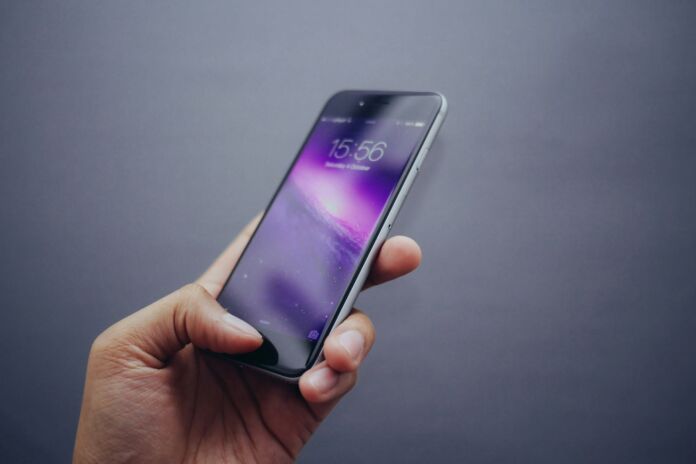In today’s tech-savvy world, it is hard to imagine modern civilization without a smartphone. The screens, along with the tariff evolution, shifted to more advanced display technologies. Among them, the AMOLED screens interest many with vibrant colors, deep blacks, and energy efficiency. But over time, many users reported a similar problem: the screen began to tint blue or purple. This phenomenon, though worrying, can be understood and effectively addressed.
What causes the blue/purple tint on display?
The bluish or purplish tint seen mostly on AMOLED screens has plenty of possible causes. Some of which are a little complex to fully understand what this technology does.
- Burn-in: The ghost of static images
Burn-in has long been one of the typical issues of AMOLED screens, occurring when the same image is displayed for a very long time. That’s because the organic compounds forming the AMOLED pixels decompose at slightly different rates, which eventually creates permanent ghost images or color shifts. This wear, on the blue pixel level, where they decay far more quickly than the red and green ones that provide balance, results in a blue or purple tint easily noticed. - Pixel aging: The natural decline
AMOLED screens make use of organic materials that have a natural tendency to degrade with time. Due to this self-destruct mechanism, the blue pixels will deteriorate faster than others, and this will shift the color balance of the screen. After all these years, the color may change; thus, what used to be all bright colors starts tending towards having a bluish tint. - Temperature sensitivity: The heat factor
AMOLEDs are known to have somewhat temperature-dependent behavior. At extreme temperatures, be it hot or cold, the organic materials in the display may react to temporary color shifts. While this effect is generally reversible when returning to normal temperatures, its repeated action of being always under such extreme conditions may accelerate aging. - Manufacturing defects: The rare occurrence
In some cases, a bluish or purplish tint may be realized due to defects during the manufacturing process. But such defects can be seen quite shortly after buying it, just like any other manufacturing defect, therefore usually covered under warranty.
How to fix the blue/purple display tint
What one should do first is try to understand the causes, in order to strategize how to come up with effective solutions efficiently. Here are ways people address and mitigate blue/purple tint on AMOLED displays:
- Adjust display settings
Many current smartphones can be calibrated through their display settings. Color tone balance and modes such as “Night mode” or “Reading Mode” can be utilized to minimize blue light emission and adjust the colors of the screen to become more suitable for optimized reading. - Utilize burn-in fix apps
Specialized apps designed to reduce burn-in can, in most cases, be quite effective. Apps like OLED Saver or AMOLED Burn-in Fixer display certain patterns or cycle colors to refresh the pixels and thus reduce the impact of burn-in. - Enable dark mode
Dark mode, by reducing the volume of light from the screen, will slow down degradation for the pixels, especially blue ones. It not only prolongs the display life but also gives an easy viewing process in poorly lit conditions. - Consider screen replacement
If the tinting is caused by advanced aging or serious burn-in, in such cases, the most efficient way to replace the screen might be to do so. Although this might prove very expensive, it could prove to be worth the cost, more so if the device is new or high-end. - Keep software updated
While rarely a firmware or software update will improve color calibration on the panel, do continue checking on and updating for the best possible display performance most of the time.
Related
- Samsung July security patch update fails to address critical Pixel zero-day exploit, leaves devices vulnerable
- OnePlus Nord 4, Pad 2, Watch 2R, and Nord Buds 3 Pro launching on July 16
- Upcoming smartphones launching in July 2024: Top 12+ new releases with specifications
- realme 13 Pro+ certified by TENAA: Key specifications, curved display, triple cameras, and July launch
Preventive measures
Prevention is always better than cure. Here are some tips to prolong the life of your AMOLED display and minimize the risk of a blue or purple tint:
- Avoid static images: Change wallpapers regularly; avoid static images displayed on the screen for a long time.
- Lower brightness: Screen degradation may reduce by lowering the display brightness.
- Set screen time-out: A short time-out will minimize the exposure time of static images.
- Use blue light filters: Enabling the blue light filter reduces strain on blue pixels, hence prolonging their life.
By following these bits of information and tips, you will be able to keep enjoying the brilliance of your AMOLED screens in the long term. Make sure that your devices remain your dependable friend against time in this very fast-paced digital battlefield.


